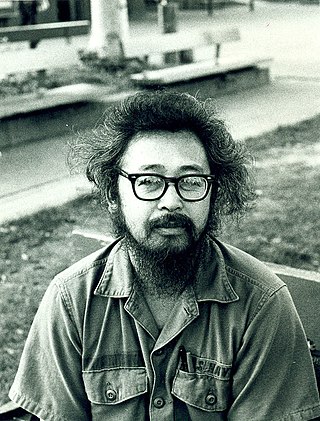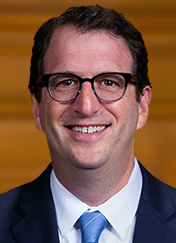
A Little Manila, also known as a Manilatown or Filipinotown, is a community with a large Filipino immigrant and descendant population. Little Manilas are enclaves of Overseas Filipinos consisting of people of Filipino origin living outside of the Philippines.

Richard Duane Hongisto was a businessman, politician, sheriff, and police chief of San Francisco, California, and Cleveland, Ohio.

Single room occupancy is a form of housing that is typically aimed at residents with low or minimal incomes, or single adults who like a minimalist lifestyle, who rent small, furnished single rooms with a bed, chair, and sometimes a small desk. SRO units are rented out as permanent residence and/or primary residence to individuals, within a multi-tenant building where tenants share a kitchen, toilets or bathrooms. SRO units range from 7 to 13 square metres. In some instances, contemporary units may have a small refrigerator, microwave, or sink.


The Redstone Building, also known as the Redstone Labor Temple, was constructed and operated by the San Francisco Labor Council Hall Associates. Initial planning started in 1910, with most construction work done during 1914. Its primary tenant was the San Francisco Labor Council, including 22 labor union offices as well as meeting halls. The building was a hub of union organizing and work activities and a "primary center for the city's historic labor community for over half a century."

Kearny Street Workshop (KSW) in San Francisco, California, is the oldest multidisciplinary arts nonprofit addressing Asian Pacific American issues. The organization's mission is to produce and present art that enriches and empowers Asian Pacific American communities. Notable participants include author and Asian American studies scholar Russell Leong, playwright and author Jessica Hagedorn, author Janice Mirikitani, poet and historian Al Robles, and actor and filmmaker Lane Nishikawa.

The Ambassador Hotel is a six-story, 134-room single room occupancy hotel at 55 Mason Street in the Tenderloin district of San Francisco, California. The hotel was designed by Earl B. Scott & K. McDonald as the Ferris Harriman Hotel and Theater, and completed in 1911. It is a contributing property to the National Register of Historic Places's Uptown Tenderloin Historic District since 2009.
Randy Shaw is an attorney, author, and activist who lives in Berkeley, California. He is the executive director of the Tenderloin Housing Clinic, a nonprofit organization in San Francisco that he co-founded in 1980. He has also co-founded and is on the board of directors of Uptown Tenderloin, Inc., a nonprofit organization that spearheaded the creation of the national Uptown Tenderloin Historic District in 2009. Uptown Tenderloin, Inc. is also the driving force behind the Tenderloin Museum, which opened in the spring of 2015. Randy is also the editor of Beyond Chron, and has written six books on activism.

Alfred A. Robles was a Filipino American poet and community activist in San Francisco. Born in 1930, he was the second eldest in a family of ten brothers and sisters and grew up in the Fillmore district of San Francisco. A community character, he was instrumental in the political fight against the city to stop the demolition of the International Hotel on Kearny Street. He was also a prominent member of the San Francisco-based Asian American writers' collective Kearny Street Workshop.
Lysley A. Tenorio is a Filipino-American short story writer.

Jane Jungyon Kim is an American attorney and politician, and the first Korean American elected official in San Francisco. She represented San Francisco's District 6 on the Board of Supervisors between 2011 and 2019. She is a member of the San Francisco's Democratic County Central Committee. She is executive director of the California Working Families Party.

Monstress is a 2012 collection of stories by Lysley Tenorio.
The Asian American Movement was a sociopolitical movement in which the widespread grassroots effort of Asian Americans affected racial, social and political change in the U.S., reaching its peak in the late 1960s to mid-1970s. During this period Asian Americans promoted anti-war and anti-imperialist activism, directly opposing what was viewed as an unjust Vietnam war. The American Asian Movement (AAM) differs from previous Asian American activism due to its emphasis on Pan-Asianism and its solidarity with U.S. and international Third World movements such as the Third World Liberation Front.

The gentrification of San Francisco has been an ongoing source of tension between renters and working people who live in the city as well as real estate interests. A result of this conflict has been an emerging antagonism between longtime working-class residents of the city and the influx of new tech workers. A major increase of gentrification in San Francisco has been attributed to the Dot-Com Boom in the 1990s, creating a strong demand for skilled tech workers from local startups and close by Silicon Valley businesses leading to rising standards of living. As a result, a large influx of new workers in the internet and technology sector began to contribute to the gentrification of historically poor immigrant neighborhoods such as the Mission District. During this time San Francisco began a transformation eventually culminating in it becoming the most expensive city to live in the United States.

Rev. Trinity Ordoña is a lesbian Filipino-American college teacher, activist, community organizer, and ordained minister currently residing in the San Francisco Bay Area. She is notable for her grassroots work on intersectional social justice. Her activism includes issues of voice and visibility for Asian/Pacific gay, lesbian, bisexual, transgender and queer individuals and their families, Lesbians of color, and survivors of sexual abuse. Her works include her dissertation Coming Out Together: an ethnohistory of the Asian and Pacific Islander queer women's and transgendered people's movement of San Francisco, as well as various interviews and articles published in anthologies like Filipino Americans: Transformation and Identity and Asian/Pacific Islander American Women: A Historical Anthology. She co-founded Asian and Pacific Islander Family Pride (APIFP), which "[sustains] support networks for API families with members who are LGBTQ," founded Healing for Change, "a CCSF student organization that sponsors campus-community healing events directed to survivors of violence and abuse," and is currently an instructor in the Lesbian, Gay, Bisexual and Transgender Studies Department at City College of San Francisco.
Violeta Marasigan, better known by her nickname "Bullet X", or more plainly "Bullet", was a Filipino-American social worker and activist best known for her key role in the International Hotel eviction protests which became an important incident in Filipino American history; as well as her resistance against and eventual imprisonment under the dictatorship of Ferdinand Marcos; and for helping establish the Filipino feminist organization GABRIELA and the released-political-detainees group SELDA. She also did advocacy work focused on education for Filipino immigrant children, equal military benefits for Filipino American World War II veterans, and ending racial slurs against Filipino women on American television.

Dean E. Preston is an American attorney and member of the San Francisco Board of Supervisors. He founded Tenants Together, a California tenant advocacy organization. In November 2019, Preston won a special election to finish Mayor London Breed's term on the Board of Supervisors, defeating incumbent Vallie Brown to represent District 5. He was re-elected in the November 2020 election.
Manilatown was a Filipino American neighborhood in San Francisco, which thrived from the 1920s to late 1970s. The district encompassed a three block radius around Kearny and Jackson Streets, next to Chinatown. The neighborhood was known for the International Hotel, a single room occupancy (SRO) hotel where many of the residents lived. Manilatown was also home to many businesses that catered to the Filipino American community, such as Manila Cafe, New Luneta Cafe, Bataan Lunch, Casa Playa, Sampagita Restaurant, Blanco's Bar, Lucky M. Pool Hall, and Tino's Barber Shop. At its height, over 1000 residents lived in Manilatown, and it contained a total of 30,000 transient laborers. From the late 1960s-70s, the neighborhood was transformed by city initiatives that aimed to gentrify the area. By 1977, the neighborhood had been largely destroyed, and it became part of Chinatown.
The manong generation were the first generation of Filipino immigrants to arrive en masse to the United States. They formed some of the first Little Manila communities in the United States, and they played a pivotal role in the farmworker movement. The term manong comes from the Ilocano word for "elder brother," while manang means "elder sister."

Johanna Poethig is an American Bay Area visual, public and performance artist whose work includes murals, paintings, sculpture and multimedia installations. She has split her practice between community-based public art and gallery and performance works that mix satire, feminism and cultural critique. Poethig emerged in the 1980s as socially engaged collaborations with youth and marginalized groups gained increasing attention; she has worked as an artist and educator with diverse immigrant communities, children from five to seventeen, senior citizens, incarcerated women and mental health patients, among others. Artweek critic Meredith Tromble places her in an activist tradition running from Jacques-Louis David through Diego Rivera to Barbara Kruger, writing that her work, including more than fifty major murals and installations, combines "the idealist and caustic."




















